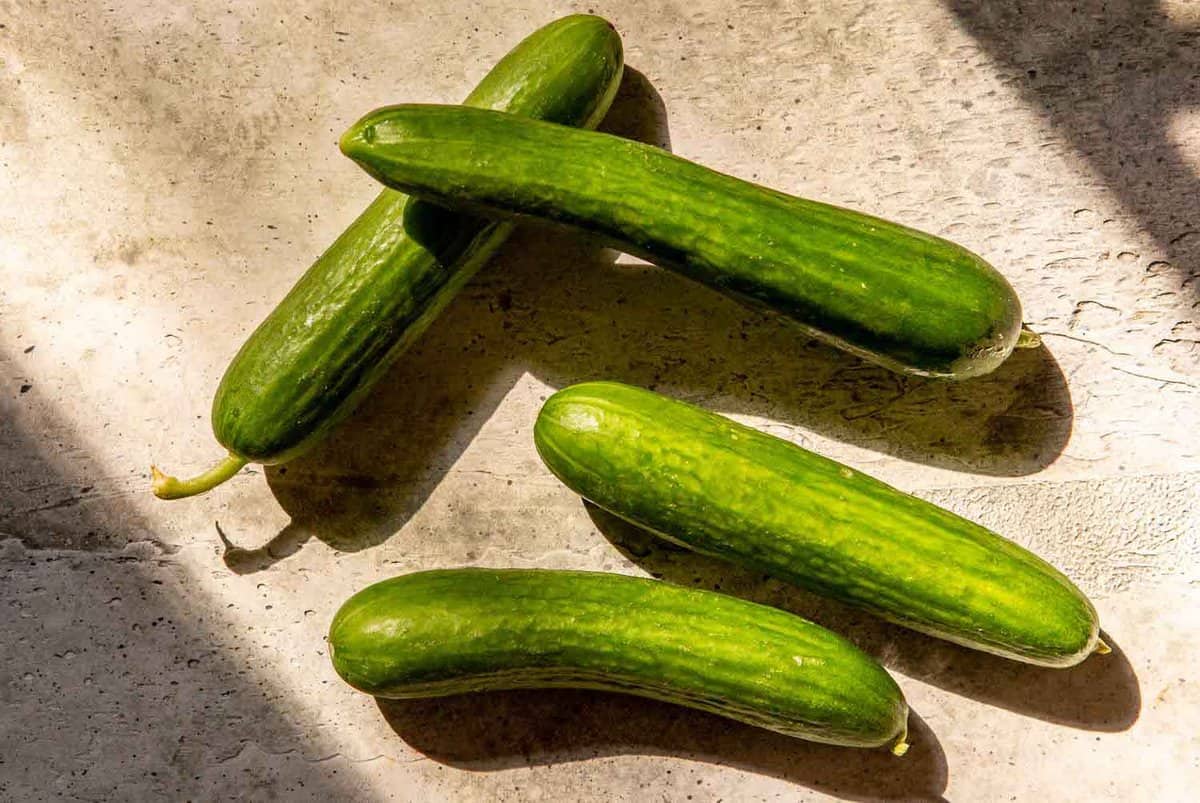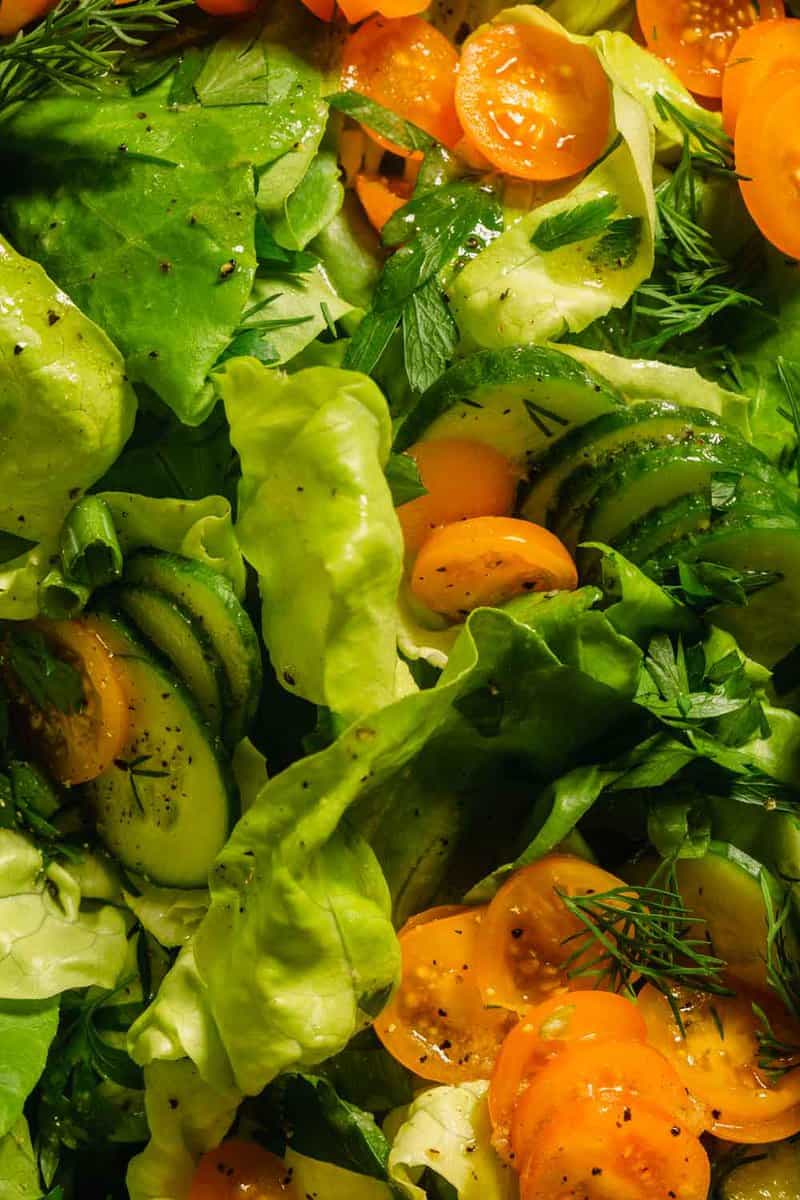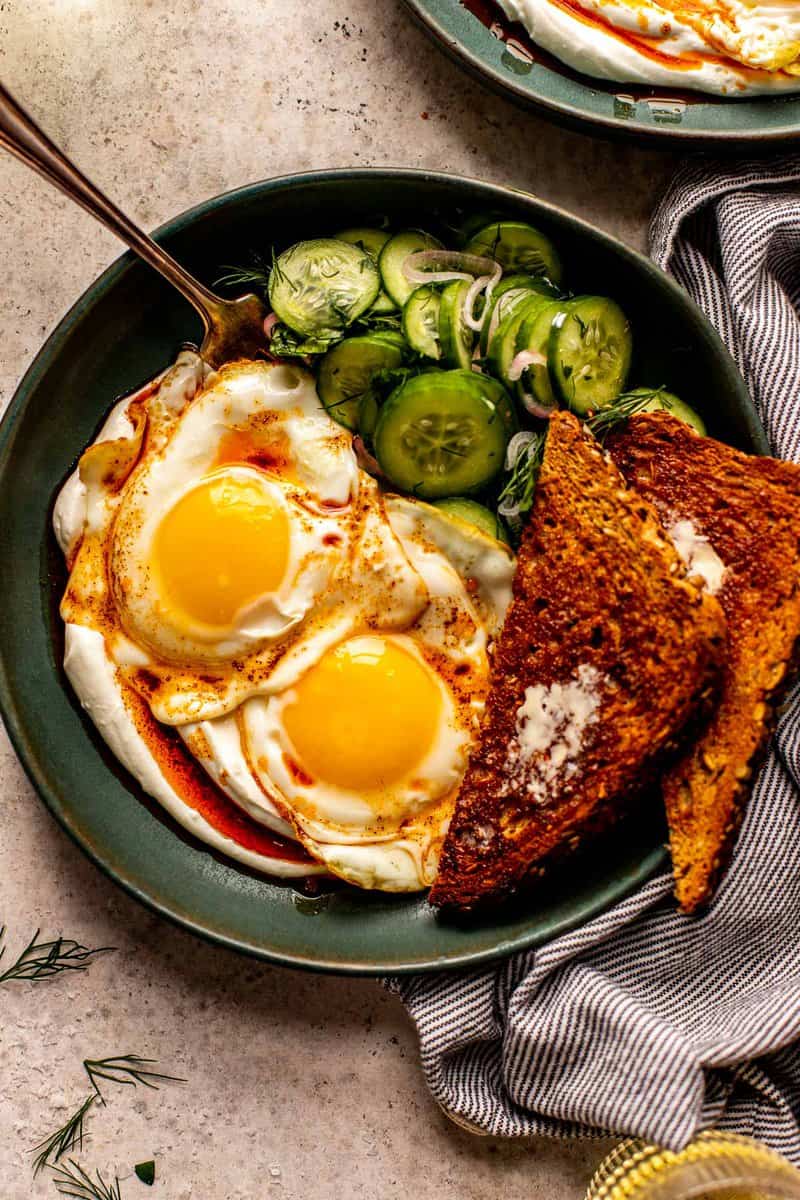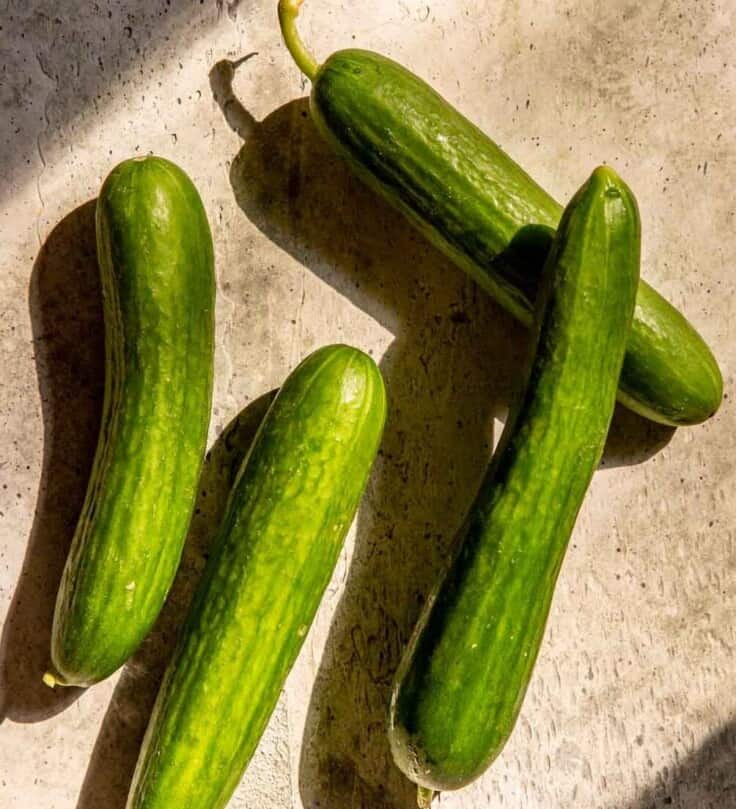There are a handful of cucumber varieties to choose form, but two of the tastiest varieties are the Persian cucumber and the English cucumber. Both varieties have a thin skin, are nearly seedless and delicious when enjoyed raw. Here’s what you need to know about Persian cucumbers.
What is a Persian Cucumber?
Persian cucumbers, which can often be found labeled as “mini cucumbers” are much shorter in length than an English cucumber. About 6 inches in length, they have a very thin skin and are nearly seedless. What makes them so delicious is that they have a very fresh slightly sweet flavor and are incredibly crunchy in texture. They are often sold in packs of 5 or 6 in a tray wrapped with plastic.

The Difference Between Persian Cucumbers and English Cucumbers
English cucumbers on the other hand are much longer than Persian cucumbers. They’re usually at least a foot long and are sold individually tightly wrapped in plastic. English cucumbers also have a thin skin and are nearly seedless but they tend to be a bit more watery, mild in flavor and not as crunchy as mini cucumbers. They’re a much tastier alternative to regular pole cucumbers, but not as flavorful as Persian cucumbers.
Persian Cucumber vs Mini Cucumber
Melissa’s Produce sells Persian cucumbers labeled as mini cucumbers. So when you see a package of “mini cucumbers” they are Persian cucumbers.
However, there’s an emergence of even tinier cucumbers labeled “Qukes™” or “CuteCumber Poppers” which are tiny cocktail cucumbers perfect for snacking and dipping. These are harder to find, but delicious nonetheless.

Where to Buy
It’s becoming increasingly easier to find Persian cucumbers in most major grocery stores. Trader Joe’s is known for stocking them regularly but you can also find them at Whole Foods, Hy-Vee, Aldi and Walmart.
Recipes to Try with Persian Cucumbers
Persian cukes are great served in any raw application—as a dipper for dressings and hummus, sliced thin and tossed in a salad, cut into large chunks and tossed with peaches for a simple salad, and much more.
We also like to cut them into chunks and toss them with hot gochujang noodles—their texture softens slightly while still adding a nice fresh crunch.
And finally, they are great for quick pickled and serving on sandwiches, burgers, with our Turkish Eggs and with our Steak and Eggs.
How to Store
We recommend storing Persian cucumbers in the package they came in stored in the crisper drawer of your refrigerator. Stored this way, they should last at least 1 week.
We do not recommend freezing any type of cucumber.

